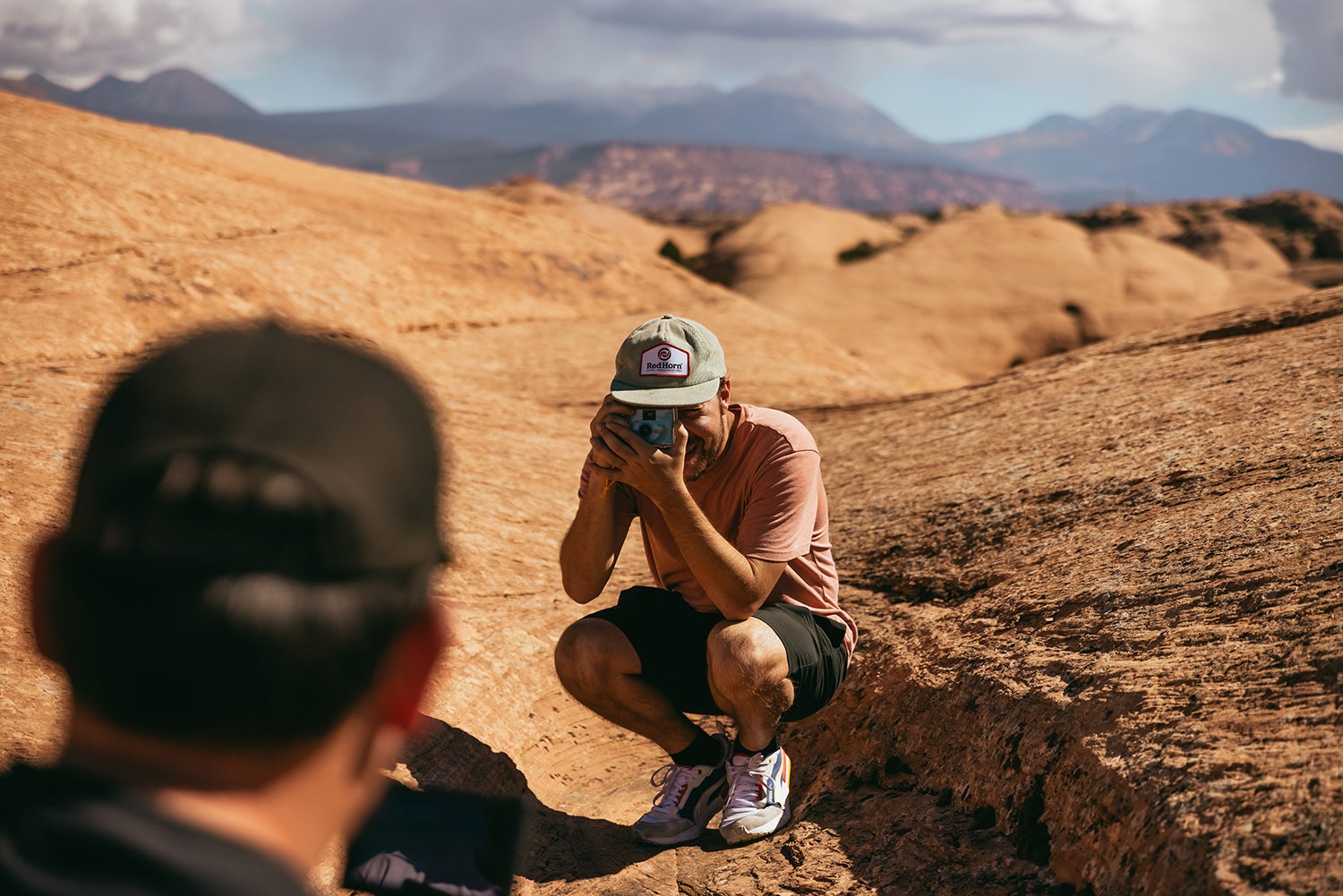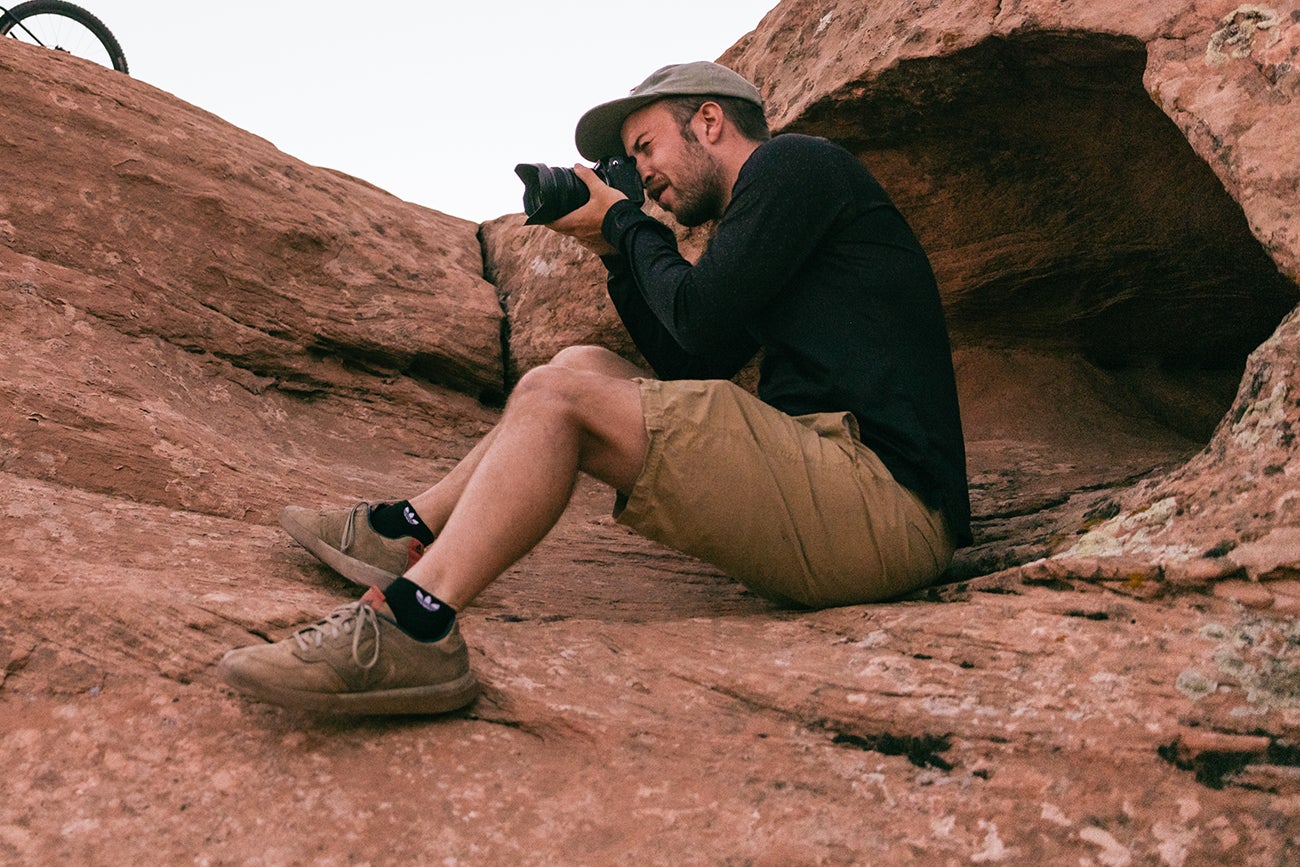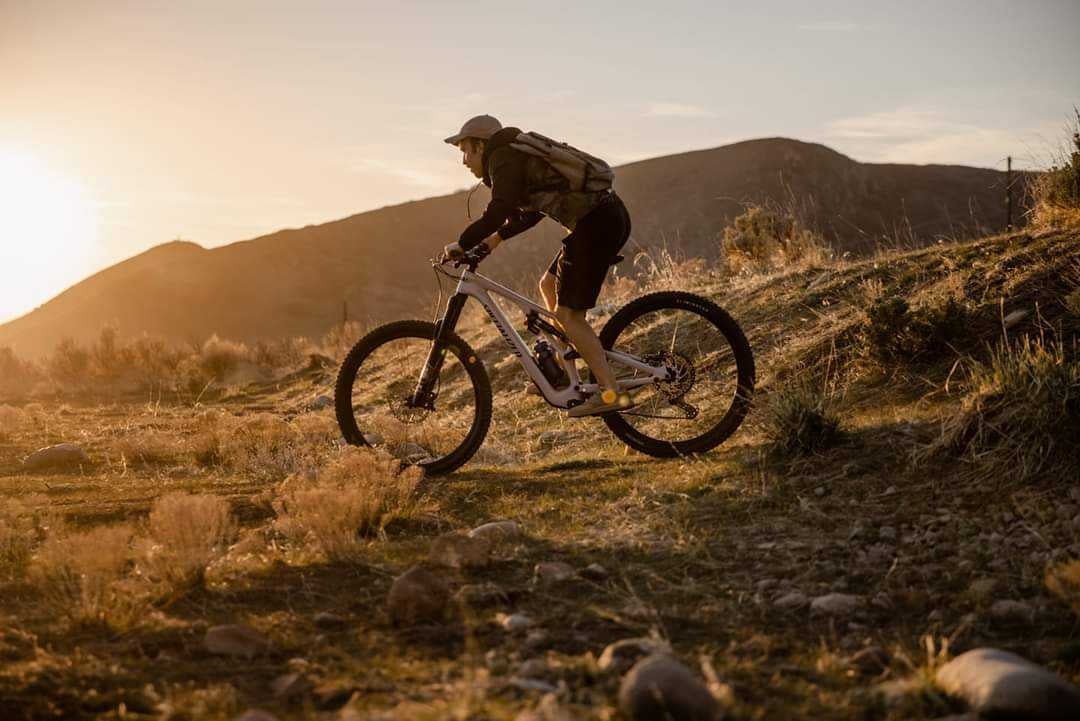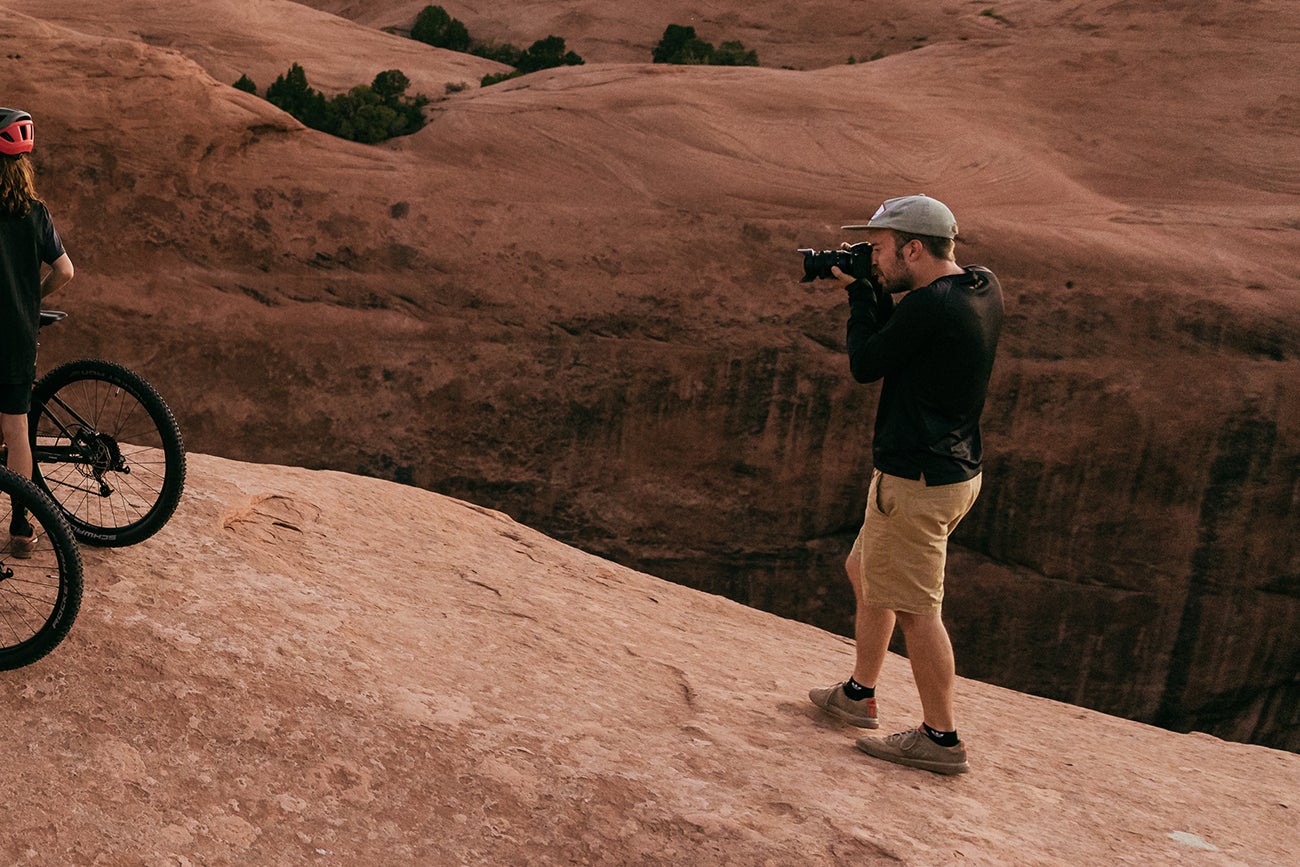An Interview with Dylan Bures: “You’ll miss the scenery if you’re too focused on the destination.”
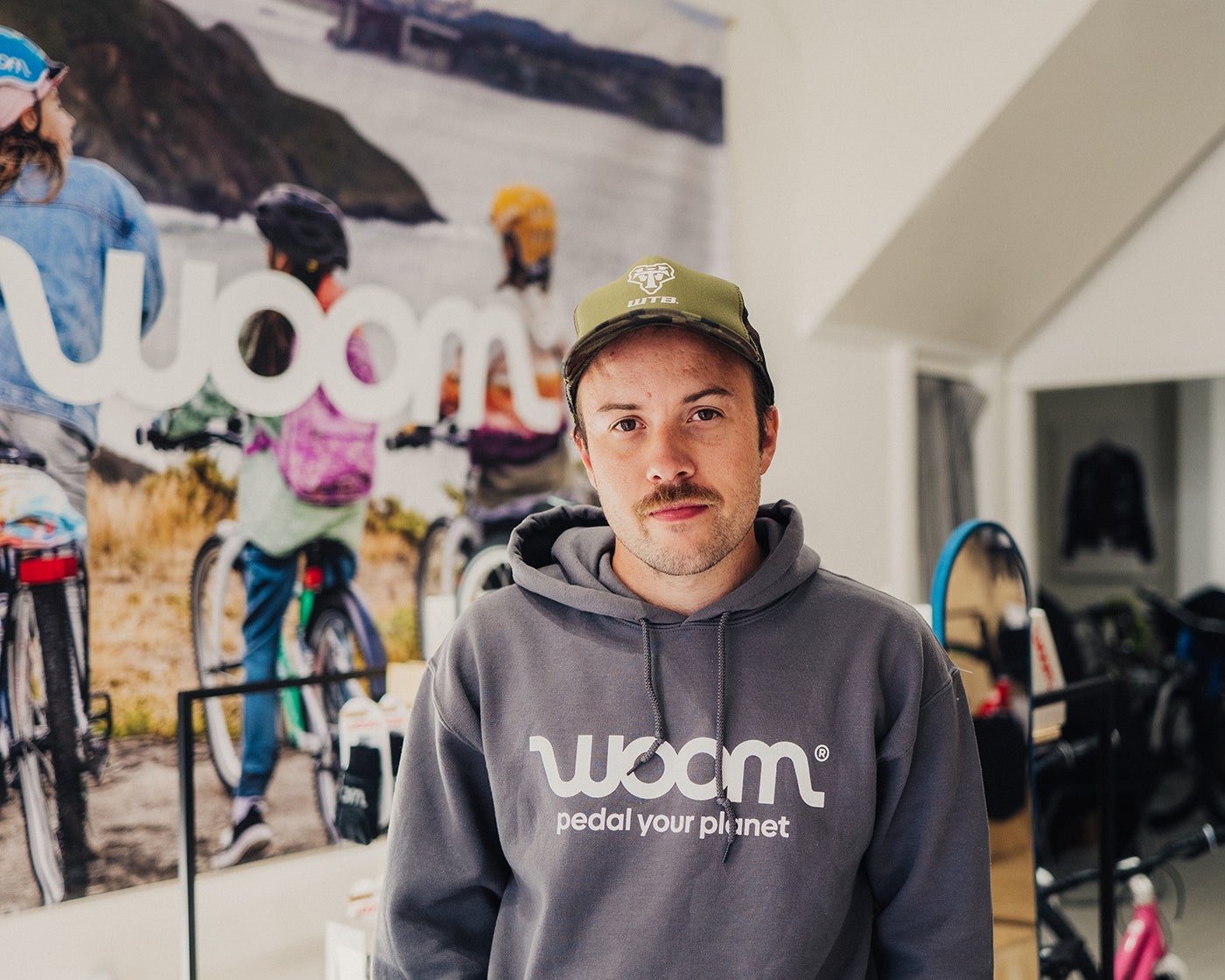
Dylan Bures has been with woom for four years, kicking off as a woomster intern and one of the original three on the US-marketing team. His passion for photography and videography drives him as he seeks new ways to share the woom story. Dylan discusses how storytelling can make a difference on a personal and professional level.
1. How did you end up working at woom?
I was initially an audio engineer in audio production and had been specializing in photo and video for companies in the Austin area. I was starting to get burned out within the music industry when I saw a job posting from woom looking for a paid marketing intern. The timing was right because I was looking for more stability outside of just being a freelancer, and I thought it looked like a good opportunity to learn.
A couple of weeks later, woom called me in. I was interviewed by Dave Norris, who was the Marketing Manager at the time, as well as woom bikes USA founder Mathias Ihlenfeld, who is now the global co-CEO. This was in September 2018. Almost instantly after meeting Mathias, it clicked: Yeah, this guy is super cool. I want to work with him.
I remember Mathias coming in, and you could feel the energy — which may sound weird, but anyone who’s met him realizes he’s such a fired-up dude. I wasn’t even all the way home when woom sent me an email asking if I wanted to start in a week.
2. What have all of your roles been at woom?
I was one of two interns who started back in 2018. Partway through the internship, I sat down with Dave and mentioned my desire to join woom full-time. They offered me a position a week later.
My title and role fluctuated a lot, but ultimately, I was the Content Specialist from year one through mid-year three. In that role, I was responsible for all the email marketing, graphic design, social media, and anything else necessary from a communications standpoint. When the marketing team grew from three of us to around 15 people, I moved back into focusing on photo and video. Today, I am woom’s Photo/Video Producer in North America.
3. What does your job look like on a daily basis?
I usually start my mornings with lots of communication and phone calls with my European counterparts. I lead the charge in making sure whatever happens in Europe for global video productions is applicable to the US audience, and vice versa. We’re also strategizing for the brand’s future and improving photo and video. After that, it’s meetings with the US team and making sure I’m meeting whatever needs they have.
The unique challenge with photos and videos is they can’t be captured after the fact. Photography and videography both take a lot of planning and coordination to execute the vision. So we try to stay ahead of the team, at least three to six months ahead, when it comes to projects and campaigns.
Doing well in this role entails anticipating needs before they arise. Ideally, we have everything ready and dialed in before we even put feet on the ground wherever we’re shooting. Whether we are pulling land use permits, talking to insurance reps, communicating with our external photoshoot crew members, or carefully trawling Google Street View for locations, it's always about getting the perfect gameplan in place prior to executing it.
4. What do you enjoy about your job, and what is the most challenging part?
I love the creative direction aspect. First, there’s connecting all the creative dots. Who are we talking to? How can we make this a relevant and impactful story? Where are we going to tell that story? These are the things we must consider to make a production happen, both from a creative and logistical standpoint. There’s an intangible joy of connecting all these pieces together.
Logistical challenges come from all angles. Rules and regulations for photo shooting can vary wildly from one municipality to the next. Weather forecasts can make or break a shoot. We spend a lot of time double-checking the sunrise and sunset times to ensure we capture the correct lighting. Lining up these variables, along with scheduling and casting, adds another layer of complexity.
Another challenging piece, in a good way, is the global aspect of working together. The time difference, physical difference, and cultural differences can be challenging, but I’m very close with my European counterparts. It’s also fun learning from them, and they learn from me, so each shoot after the next is always better.
That first moment when we’re on set with everybody, it’s cool to see how all the work comes together. And when we get those first photos and first videos from the freelancers for the production, we can breathe a sigh of relief and appreciate the work that’s gone into it. We’ve seen the output and are happy with it, and it looks good. That end payoff is my favorite part.
5. When did you first become interested in telling stories with photos and videos?
One of the first things that led me into photo and video — and, in a sense, storytelling — was that I used to watch a lot of concert filming. Back in the early 2000s, mid-level bands started to film their own concerts. From there, it spread into the mid 2000s trend of YouTube coming into its own, and independent filmmakers were doing documentaries about different things.
As a young, impressionable person in the media space at the time, I went down that path. I would spend hours watching short-form stories about anything and everything. This, to me, is the perfect format. My favorite filmmaker is Beau Miles, and he’s the inspiration behind a lot of the storytelling I do at woom.
6. Where did you develop your skills in photo and video?
I went to college here in Austin at Austin Community College for two years, with the original goal of transferring to Texas State University to study chemistry. I originally wanted to work in aquatic chemistry for the National Parks Service. But then I had an epiphany during a tough stretch of Organic Chemistry II: I realized I didn’t want to do this for the rest of my life.
Instead, I went to the Recording Conservatory of Austin, a hands-on audio engineering program. The owner had started getting into the video side of music production, filming live productions. He needed someone to help, and I was a student with way too much free time. My whole entry into that medium was filming bands playing live, so naturally, I was like, “Let’s do it. This is the dream!”
After a few years, I finished up my schooling there and continued to freelance in the music industry. After I left the music industry a year later, I continued freelancing, but as a photo/video creative instead.
7. How has woom helped encourage your career growth?
This could be a whole book right here! It starts first with my internship, and woom taking a chance on an intern with no bachelor’s degree. Instead of simply saying I didn’t have the right things on paper, woom believed in me and my potential.
There’s always been a high level of trust with woom. Especially in the US, where woom has been growing so quickly, woomsters have often taken on duties outside of their training. There was never this fear that if I couldn’t do something, I’d be reprimanded. There has always been the freedom to try.
Also, woom has constantly been willing to reevaluate and grow my role. It’s always been a trusting and open relationship, with good communication on that pathway. Your woom career is what you make of it: if you want to come in, dig deep, and try new things, this is a good place to do it because woom will give you the opportunities.
8. What has been the hardest lesson you’ve learned along the way?
There have been times I’m so determined to get from point A to point B quickly, and I’ve had to learn to enjoy the process. Especially in my position, I’m fortunate enough to travel quite a bit. But you’ll miss the scenery if you’re too focused on the destination.
It’s not all about getting in, shooting everything in 30 minutes, and getting out. When we focus on enjoying the whole process, the kids have more fun, the parents have more fun, and the crew has more fun. Just like the most rewarding bike rides, it pays dividends to be present and mindful for each moment along the path.
9. What have been some of your favorite projects with woom?
The best project we’ve ever done in the US to date is the woom NOW photoshoot in Seattle at the end of 2021.
We wanted to show the commuting advantages of the bikes, and commuting isn’t always sunny and bright. I wanted to show the sometimes darker side of the commuting experience in Seattle, where it’s often very dark, rainy, and gray.
We shot over two days, and I think the photos we captured there are like lightning in a bottle. The kids, the styling, the crew — everything came together perfectly. I’ve worked on a lot of fun projects, but that one was my favorite.
10. The Brooklyn Magic Moments piece was a really unique one. Can you talk more about that project?
The Brooklyn Magic Moments project was lots of fun. We wanted to tell a real story about a family in love with everyday cycling. Infrastructure for bicycle commuters isn’t as common in the US, so we wanted to tell a story about that. I knew I wanted to work with David Mawhinney. Not only is he a huge cyclist, but he’s also an incredibly compelling human being with an infectious joy for life. I wanted to tell his family’s story to the world.
The preparations for that shoot were actually last-minute because another big shoot happened a week before it. While we usually prefer to plan further in advance, sometimes the quick turnaround can create incredible results, and what came as a result of the time crunch was awesome.
When you tell these stories, the result is only as good as the source material – and David and his family were amazing. We did our best to just let them shine.
11. What is your creative process like? How do you go from concept to final product, and how do you bring together creativity to serve commercial interests?
There’s a little bit of mad science to it, and I can’t describe where that comes from! Being involved with creative fields for so long, you’ve eventually seen enough and done enough that the creativity comes to you.
My office is an intimate space, laid out and set up very intentionally, even down to the color of the walls and the lights. I have a large whiteboard in my office, which is usually the springboard for most things. I’ll lock myself in there, turn on music, and try to turn my brain off and scribble, mad scientist style.
When dealing with creative block, I have a large bookcase full of books — from famous random photographers and things I’ve found at discount bookstores — to draw on for inspiration, plus online research from other teams I admire. I try to pull ideas not only from digital materials happening in the modern space but reference older print materials as well, even if the inspiration is entirely unrelated to bikes and kids.
12. Besides photography, videography, and storytelling, what kinds of creative habits do you have?
The only other creative thing I do is cooking. I try to break the rules a bit with cooking and not follow recipes to a T. Every other day, instead of buying groceries in bulk, I’ll go into the grocery store, walk around until I see something that inspires me, and then make it for dinner.
It keeps things fresh and interesting, and we have way less waste since we’re only making what we want. Cooking like this is a fun way to add creativity to your daily routine. It’s so chaotic and free of restrictions, which makes it a nice contrast to regular work.
13. You’re an avid rider. How did you get into biking?
My background is in soccer, and I played a lot of soccer growing up at a somewhat high level. I started looking into lower-impact cardiovascular activities right around the time I started working for woom, and the obvious answer was cycling.
People at woom really helped remove the layers of intimidation and helped me get into the sport. I started as a mountain biker but got a little too reckless, so I got back into more of the road riding and gravel riding scene. Some of the guys at woom try to do rides once a month where we’ll go outside Austin for a few hours and just de-stress.
I have a special point-and-shoot camera that fits into my jersey pocket, so when I’m on the bike and see something cool, I always have my camera with me.
14. Where do you dream of growing your career?
It is my ultimate goal to be a creative director. I love the production side and the photo/video side of things, but at the same time, I feel most comfortable in that ultimate responsibility of the creative structure, process, and output from the continuity and congruency of several campaigns across a year.
I love the idea of the creative challenge that will come with that level of a role, but I’m also happy to enjoy the present moment. As long as I enjoy the ride and keep improving my skills, I’ll get there eventually and don’t need to go as fast as possible.
15. Where do you hope to take woom with storytelling?
Over the next year or two, it’s about continuing to establish what kind of narratives we want to tell and building our network of creatives, people, and stories. From there, we’ve established these various ways we want to tell stories, no matter how big or small, so I look forward to expanding on that.
Personally, I want to find stories that may not be the most grandiose. How can we not only tell the stories of kids who bike across America but also the story of a kid biking to kindergarten for the first time, which is a momentous achievement? I want to go beyond “here’s a cool family doing an epic thing” to “here is a real family doing something empowering.” I want to show stories from an epic scale, all the way down to the daily moments.
16. During these years with woom, what have you learned about yourself?
Especially in the creative world, there’s a lot of subjectivity and not many tangible metrics, so it’s natural to deal with imposter syndrome. That’s something I dealt with a lot early on and still deal with today. Working at woom has helped me to overcome a lot of that personally.
Sometimes, I’ll think I’m not good enough to be doing what I’m doing. But then I’ll go to woom’s headquarters in Vienna and see a photo from a shoot I produced on a 10x12 print hanging over a brand-new office space with 40 people in it. You just get hit with this immense feeling of trust and purpose again. You’re going to be uncomfortable and have to push yourself, but if you take the trust given to you and, in turn, trust yourself, it helps you overcome those things, and you come off better for it.
